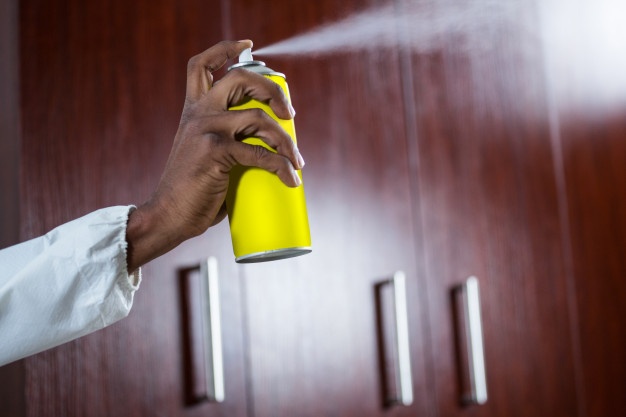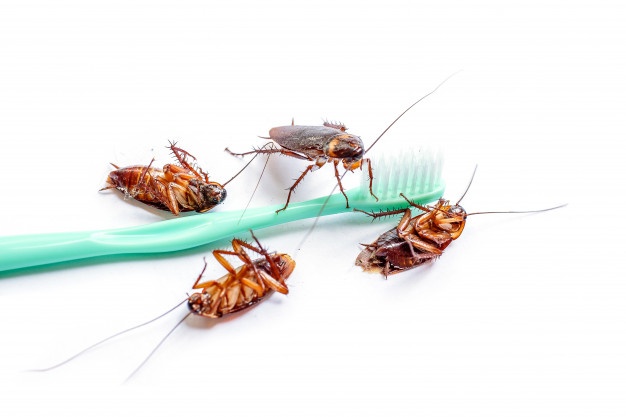Getting rid of cockroaches involves more than just spraying an insecticide or putting down ‘dudu‘ dust. Cockroaches get into everything, multiply rapidly, and can survive for several months without food and up to two weeks without water.
They also like warm, dark, moist spaces.
Therefore, your kitchen is practically a perfect insect habitat.
But you really don’t want these pests in your kitchen. In addition to simply being nasty, these insects carry a number of diseases, and their excrement can cause severe allergic reactions in some people.
Prevention Is Always The Best Medicine
The first step to keeping cockroaches out of your kitchen is to keep them out of your environment, so they’re less likely to find their way into your home.
Your next defence against these insects is to make your home inhospitable to them.
Here’s what you need to do:
1. PLUG THE HOLES
Keep them out of your home by caulking cracks and crevices in your home’s foundation, in baseboards, and in walls.
Cockroaches can crawl through incredibly tiny spaces — as thin as a dime — so be extra diligent about sealing up even the tiniest cracks or holes.
Homeowners should also cover drains and make sure windows are tight.
Seal any gaps around water, gas, and heating pipes, both indoors and out.
You also want to eliminate water sources by finding and repairing any water leaks. Experts recommend insulating kitchen and bathroom pipes to prevent humidity and condensation.
2. GIVE THEM NOWHERE TO HIDE

Now that you’ve sealed everything up, the next step is to eliminate hiding places.
These creepy-crawlies are ‘thigmotropic‘, meaning they like their bodies — preferably on all sides — to be in contact with solid objects. In other words, they like to be in piles of stuff.
Like in the crammed-together paper bags you might have stuffed between under your sink, for example.
Look for areas where you might be inadvertently offering these pests a safe refuge, and have a wholesale cleanout.
Of course, in general, do your best to keep your home tidy and clutter-free.
3. KEEP IT CLEAN
In all seriousness, this one is important. And that’s because, ultimately, it’s food the pests are after. So you want to keep your kitchen as pristine as you possibly can.
Even though it’s late and you’re tired, don’t leave dirty dishes in the sink. And go ahead and take the time to carefully wipe down the countertops of all crumbs and food bits.
Don’t leave food out on the counter.
Make sure food items in your pantry are thoroughly sealed, and keep pantry shelves clean and crumb-free.
Sweep or mop often to not only clean up food particles but to also clean up excrement, which A. stinks and B. attracts more of these unwelcome guests.
What To Do When Prevention Fails
If you’ve implemented all of the above prevention tricks and the vile insects still infiltrate your home, you may need to turn to more murderous solutions.
1. DUST THEM OFF
Start with ‘dudu‘ dust, a powdery substance made up of carbaryl. It overestimates an insect’s nervous system eventually making it impossible for the insect to breath.
To apply, clean thoroughly, and then spread a very thin layer of the dust in areas known to be trafficked by cockroaches.
Don’t apply the dust to damp or wet areas, as the wet powder won’t kill insects.
As the bugs track through the dust, their exoskeleton will be affected and they will die in 7 to 14 days.
2. BORIC ACID
Another often used and highly effective insect killer is boric acid. Derived from the mineral boron, boric acid is quite toxic to insects.
It can also be toxic to pets and humans, so use boric acid with caution.
A few licks are unlikely to hurt a large dog, but repeated exposure can cause vomiting and dehydration. Small dogs and cats are at greater risk.
You’ll want to caution children to stay away from treated areas.
3. OTHER CHEMICALS

A wide variety of commercial traps, strips, and sprays are also available.
They often contain a combination of insecticides, such as fipronil or imidacloprid, which do a good job of killing them. But these are also toxic to pets and people, so use caution.
Bait stations are among the safest toxin-delivery vehicles, as the poisons are contained within a pet- and child-proof container.
The bait stations contain a poison-tainted food attractant. The insects feed, then go back to their nesting area where they expel sputum and feces and kill others, as well.
Place the bait traps in areas where you’ve seen a lot of bug traffic. Under the kitchen sink is usually a good place, for example.
Can You Do More?
If you’re pretty much just completely over it with these gross insects in the kitchen, it’s time to take steps to get rid of them.
First, ensure that you’ve done everything you can to rid your environment of the pests, so they’re less likely to be around and invade your home.
Seal up your home to make ingress more difficult.
Then, make sure your home is as clean as possible, and eliminate possible hiding spots.
If they’re still intruding on your midnight refrigerator raids, consider using ‘dudu‘ dust, and if that doesn’t work, you might need to turn to more toxic solutions such as boric acid or other chemicals.
Do you have tried and true cockroach-killing methods? Share tips below, in the comments section.














